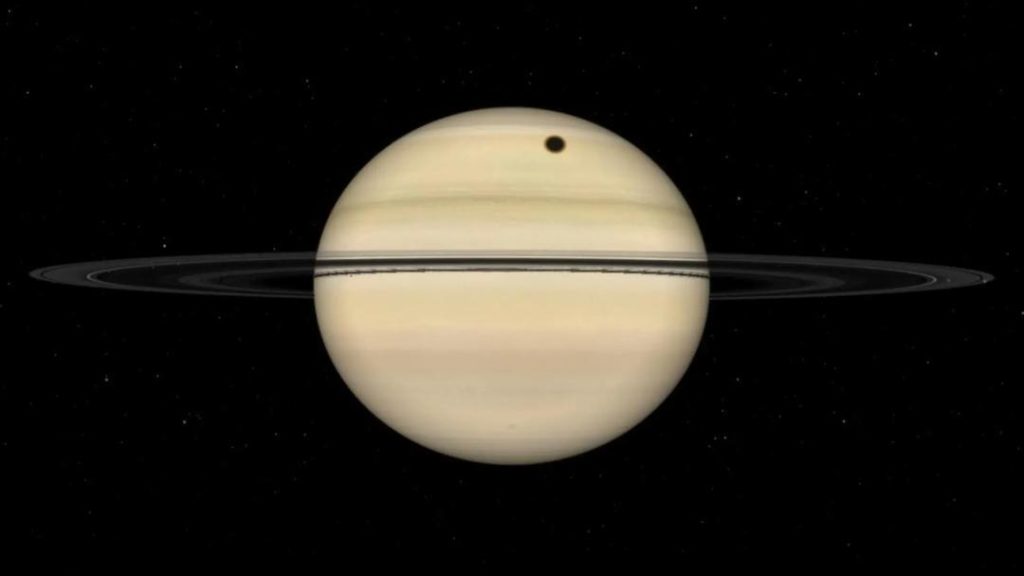
Titan to Cast its Shadow on Saturn on August 19
On August 19, a rare celestial event will take place, offering astronomers and space enthusiasts a unique opportunity to witness the largest moon of Saturn, Titan, casting its shadow on the planet. This phenomenon occurs only every 15 years, making it a significant event in the world of astronomy. In this blog post, we’ll delve into the details of this rare alignment and provide tips on how to view it through a telescope.
What is a Transit of Titan?
A transit of Titan occurs when the moon passes directly between the Earth and Saturn, casting its shadow on the planet. During this event, the moon’s diameter will appear smaller than the planet’s diameter, creating a fascinating sight for astronomers. The transit is a rare occurrence due to the unique orbital patterns of Saturn’s moons and rings.
When and How to View the Transit
The transit of Titan’s shadow on Saturn will begin at 11:22 am Indian Standard Time (IST) on August 19. To view this event, you’ll need an 8.0-inch telescope with a magnification power of 200x. This will allow you to witness the moon’s shadow slowly moving across the surface of Saturn.
Why is this Event Rare?
The rarity of this event can be attributed to the complex orbital patterns of Saturn’s moons and rings. Saturn has a total of 82 confirmed moons, each with its own unique orbit. The moon’s orbit is tilted at an angle of about 1.3 degrees relative to Saturn’s equator, which makes it difficult for the moon to pass directly between the Earth and Saturn.
When was the Last Transit?
The last transit of Titan’s shadow on Saturn occurred in 2001. Since then, the moon has been moving away from the planet, making this event a rare and unique opportunity for astronomers and space enthusiasts.
When will it Happen Again?
The next transit of Titan’s shadow on Saturn is expected to occur in the mid-2040s. This will be a significant event, offering another chance for astronomers to study the moon’s shadow and the planet’s atmosphere.
Tips for Viewing the Transit
If you’re planning to view the transit, here are some tips to keep in mind:
- Make sure you have a clear view of the sky: Find a location with minimal light pollution and a clear view of the southern horizon.
- Use a telescope with a sufficient magnification power: An 8.0-inch telescope with a magnification power of 200x is recommended for this event.
- Focus on the correct area: Use a planisphere or a star chart to locate Saturn and Titan in the sky. Make sure you’re focusing on the correct area where the moon’s shadow will appear.
- Be patient: The transit will take several hours to complete, so be prepared to spend some time observing the event.
- Record your observations: Take notes and photographs to document your experience and share it with other astronomers.
Conclusion
The transit of Titan’s shadow on Saturn is a rare and unique event that offers astronomers and space enthusiasts a chance to study the moon’s shadow and the planet’s atmosphere. With the right equipment and a clear view of the sky, you can witness this fascinating event on August 19. So mark your calendars and get ready to observe this rare celestial alignment.
Source:






